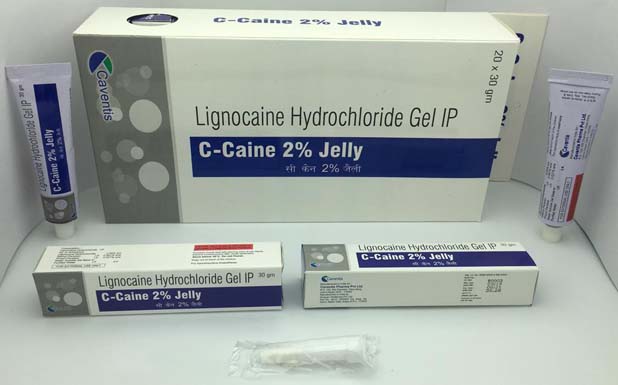This medication is used on the skin to stop itching and pain from certain skin conditions e.g., scrapes, minor burns, eczema, insect bites and to treat minor discomfort and itching caused by hemorrhoids and certain other problems of the genital/anal area such as anal fissures, itching around the vagina/rectum). Lidocaine is a local anesthetic that works by causing temporary numbness/loss of feeling in the skin and mucous membranes.
Lignocaine Hydrochloride Gel IP 2% w/w
Gel
For Derma Care

Lignocaine Hydrochloride Gel is an anaesthetic gel used as a lubricant for the insertion of instruments for medical procedures, such as catheters, and for the treatment of symptoms of painful inflammation of the urethra and bladder.It is also used to numb the lining of the mouth, throat, or nose before certain medical procedures (such as intubation).
Lignocaine belongs to a group of medicines known as local anaesthetics. It works by temporarily blocking the pathway of pain signals along nerves. Pain is caused by the stimulation of pain receptors at the ends of nerves. The stimulation causes sodium to enter the nerve ending, which causes an electrical signal to build up in the nerve. When this electrical signal is big enough, it passes along the nerve to the brain, where the signal is interpreted as pain. works by stopping the sodium entering the nerve ending at the site of the pain. This prevents an electrical signal building up and passing along the nerve fibres to the brain. In this way it causes numbness and relieves pain at the area it is applied to.
Cetirizine Dihydrochloride is contraindicated in those patients with a known hypersensitivity to it or any of its ingredients or hydroxyzine.
Hypersensitivity (including urticaria), angioneurotic oedema, Rash, eczema, erythema, dermatitis (including dermatitis contact), pruritus, Photosensitivity reaction.
Apply gel as necessary to the affected area. Allow three to five minutes for the anaesthetic to take affect.